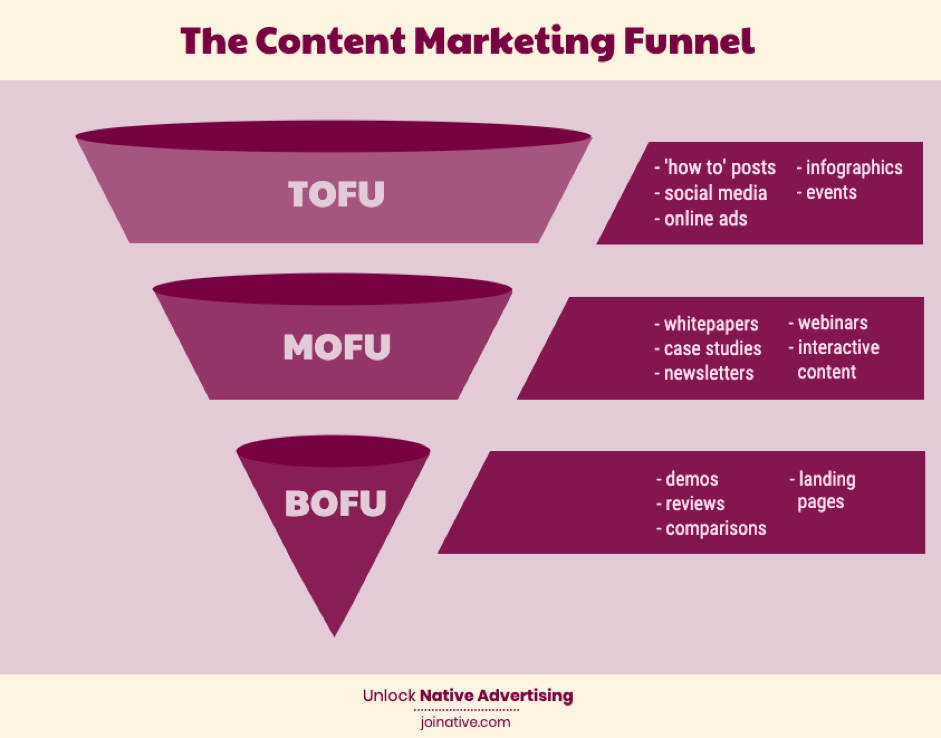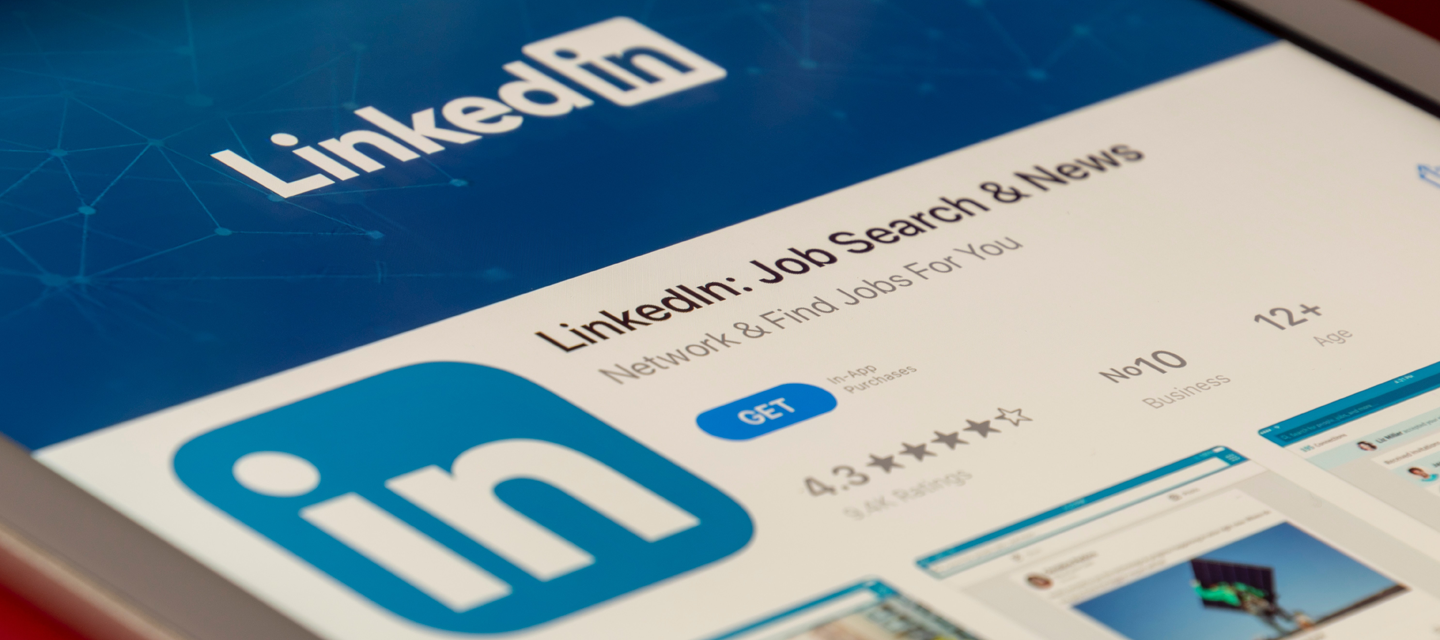How and why to combine content marketing and native advertising
How and why to introduce native advertising to optimise your content marketing plan

Many companies have made content marketing an integral part of their marketing strategies.
Almost every brand runs a corporate blog, publishes company updates on social media, produces engaging landing pages, etc., and as you’re reading this post, I’ll suppose you’re not an exception.
You spend time researching your target audience, creating quality content, and publishing it consistently, but your audience isn’t growing. We’ve all been there. The issue is that new content is getting published faster than your audience is ready to perceive it. Attracting organic traffic is a good strategy, but sometimes your content just needs a push to skyrocket.
In this post, I’ll tell you how you can use native advertising to take your content marketing to the next level and finally reach your business goals.
Need help with content marketing?
Native advertising defined
Now, let’s talk about native advertising. While being increasingly popular during the last few years, it’s still an ambiguous concept for many marketers (even though they might have been trying to make something out of it for some time). So…
What is native advertising?
It’s a paid advertising approach that involves using ads that fit seamlessly into the editorial content of the website they’re displayed on. Due to their non-intrusive form, native ads perform better than traditional display ads and help advertisers avoid banner blindness.
When we at Joinative talk about native advertising, we often refer to content recommendation widgets that can be found below or next to the articles on the publishers’ websites.

Still, you can’t discount in-feed social ads or promoted listings on eCommerce websites – these are also forms of native ads.
As has been said, native ads are non-intrusive. It means they don’t irritate users as banner ads do, giving advertisers more opportunities to attract prospects’ attention and acquire leads. Here are just a few facts that prove native advertising’s effectiveness:
- Native ads receive 53% more views than traditional display ads (Sharethrough)
- By the end of 2020, advertisers will devote almost two-thirds of display budgets to native ads (eMarketer)
- 70% of respondents claimed they would rather discover products or services through content than traditional advertisements (Content Marketing Institute)
- Native ads have registered an 18% higher lift of purchase intent compared to banner ads (Sharethrough)
Is native advertising always that effective?
No, it’s not. It often takes time to make native advertising work. First of all, you’ll need to clearly define your goals and understand how it contributes to your marketing strategy. Right, native advertising campaigns can be considered to be a last-click method aimed at driving sales, but it’s also a part of your game plan that helps you lead your prospects into the sales funnel to nurture them afterward.
Let’s learn how you can use native advertising to deliver better content marketing results.
Content marketing and native advertising: What’s in common?
We’ve already explained native advertising, and now we’ll look into the definition of content marketing.
Here’s how Content Marketing Institute defines it:
Content marketing is a strategic marketing approach focused on creating and distributing valuable, relevant, and consistent content to attract and retain a clearly defined audience — and, ultimately, to drive profitable customer action.
Content Marketing Institute
And this is a definition by HubSpot:
Content marketing is a marketing program that centers on creating, publishing, and distributing content for your target audience — usually online — the goal of which is to attract new customers.
HubSpot
Content marketing is by no means a simple approach that only includes publishing blog posts (as some might think). You see that both explanations highlight that content marketing involves two main stages, namely creating and distributing content.
Did you know that only 9% of content marketers are fully satisfied with the performance of their content marketing strategy? We believe it’s connected to the fact we spend too much time and effort to produce content and hardly spend even half as much time to distribute it.
Joe Pulizzi, founder of Content Marketing Institute says he spends 20% of his time on content creation and 80% on content promotion. And you can’t say his project isn’t successful, can you?
Native advertising will help you improve the content promotion efficiency and let you save time that can be spent on improving your content quality.
If you weren’t convinced about the importance of a strong content distribution strategy before, you should become now.
Enter the ‘content distribution techniques’ query into Google’s search box, and you’ll find tons of articles, most focusing on free approaches. Your content distribution strategy can (and should) include various ‘free’ distribution methods. But if you want to see tangible results, it can’t be limited to them.
Among paid content distribution methods, native advertising is one of the most effective. It helps you stand out in an increasingly competitive environment. What’s most important, it allows you to target people who are more likely to interact with the topics that you cover (no need to sit and wait until someone relevant will just come across your website).
With native advertising, you can be sure your content will get traction. It’s built for content. The idea of native ads isn’t just to trick your prospects saying you’ll give them some valuable information and then put a sales page in front of them. This can be the case with traditional banner ads but not with native ads. The idea is to offer content and to deliver it.
Native advertising should become an extension of your content marketing activities. It’s a good way to grow your reach while pairing well with organic distribution techniques.
In the next sections, you’ll learn how to combine native advertising and content marketing.
Native advertising and content marketing funnel
You might be doing your best to create successful native advertising campaigns, developing promising titles, and testing multiple targeting options to reach the right people. Sometimes it works, sometimes it doesn’t. If a well-crafted campaign doesn’t work, it’s most likely that your message doesn’t correlate with the targeting options you selected and fails to reach the right people. This is where content marketing funnel comes in.

The content marketing funnel is aligned with the buyer’s journey stages.
The top of the funnel (TOFU) corresponds to the awareness stage, where people acknowledge they have a problem. In this stage, you don’t expect your prospects to become your customers, but it doesn’t mean you shouldn’t create top-funnel content. Without it, you’d need to look for other ways of bringing customers to your marketing funnel.
The middle of the funnel (MOFU) is related to the consideration stage, where your prospects are looking into the ways of addressing their problem. Middle-of-funnel content should point to a specific solution, while also nurturing your target audience.
The bottom of the funnel (BOFU) complements the decision stage, where customers evaluate specific solutions and make a purchase. Bottom-of-funnel content talks about your product or service and persuades your prospects to purchase from your company.
Just like a successful content marketing strategy is about developing relevant content for different stages of the buyer’s journey, a great native advertising campaign is about putting this content in front of the right people at the right moment. Every content type can be appealing to different people, and it’s important for you as an advertiser to know who you’re going to target with it.
How can you achieve this? Let’s find out now.
Top-funnel content
Native advertising is widely used for bringing in new visitors that have never interacted with your brand before. In this stage, advertisers distribute top-funnel content that educates, entertains, or answers the audience’s common questions.
Types of content that perform well for awareness campaigns:
- Reports: People like statistics. Original research will contribute to your brand credibility.
- Infographics: Visual content has great potential to go viral.
- Cheatsheets: Readers love simple but actionable resources.
- News: If there’s a trending story related to your niche, don’t miss this opportunity.
- Videos: This is one of the best ways to attract top of the funnel leads and increase your audience pool.

Blinkist runs a brand awareness campaign. An intriguing title makes readers click on it to find out the company it talks about it Blinkist itself. Although top-funnel content typically shouldn’t tell about the product or service itself, this example can be an exception – as Blinkist is a book-summarizing subscription service, technically, they don’t talk about their service in the post.
When promoting top of the funnel content, you’ll be targeting a broader audience than you would with mid- or bottom-of-funnel content. But be careful, you don’t want to waste your budget getting clicks from completely irrelevant groups of people, do you? To completely exclude completely irrelevant audiences, go with the basic targeting options. Configure audience locations, device types, or operating systems. Create separate campaigns for different variables and identify which demographics you should focus on in the future.
The ad itself needs to be catchy enough, while also raising the right expectations. Visitors will see that your landing page doesn’t correspond to the promise contained in the ad title. They won’t lose anything except for a few seconds it took them to click on the ad and leave the page, but you’ll pay money for every click.
NOTE: Your top-of-funnel content should compel readers to move to the next buyer’s journey stage. Make sure that the landing page your native ads leads to contains elements that encourage visitors to stay longer on your website.
We should also highlight that although this campaign isn’t likely to drive sales (for this purpose, we have bottom-funnel content), it will have a significant impact on your customer’s path to purchase.
Mid-funnel content
Middle-of-funnel content includes interactive content, webinars, comprehensive guides, or templates.
These campaigns are usually aimed at acquiring leads by capturing their email addresses.
To reach the audience that is most likely to interact with your mid-funnel content, we recommend that you target audiences based on their interests or create lookalike audiences. Different native ad platforms provide different targeting options, and your campaign setup will depend on the peculiarities of the specific platform. For example, Taboola targeting options include the ‘Marketplace Audiences’ option, which allows you to target audiences with specific interests, demographics, intent, or business type.
NOTE: When you use the data that comes from the partners’ inventory (like Taboola’s Marketplace Audiences or Outbrain’s Attributes targeting), an extra fee will be added to your CPC.
If you already have insights from the top-funnel campaign, retarget your previous campaign clickers with mid-funnel content to collect more qualified leads.

Fisher Investments runs a native ad campaign to promote their guide and capture prospects’ emails.
Bottom-funnel content
Although it’s really effective in the first stages of the buyer’s journey, native advertising is much more than a top-funnel content distribution method.
With the right targeting strategy and quality content, native advertising can be a purchase driver.
Native ads that promote BOFU content may lead to the landing pages that offer eBooks, demos, or coupons. For better performance, your sales landing page should contain social proof, a FAQ section, a strong CTA, etc.

This ad leads directly to App Store where you can download the application. The main advantage of this campaign is that it sets the right expectations – you’re offered an app, and you get it.
To reach your campaign goals, you’ll want to put your ads in front of people that are most likely to convert. Retarget people who have already taken actions on your website or visited specific pages. If you’ve already been running native ad campaigns, retarget people that have previously interacted with your campaign items.
Remember to split the campaigns that target people at different buyer’s journey stages. This will allow the native ad platform to optimize delivery towards people who are more likely to be in a specific stage.
Summary
Native advertising offers an excellent opportunity to build brand awareness, capture new prospects and move existing leads through your content marketing funnel. Combined with a strong content marketing strategy, it maximizes your content performance. Once you start your first campaigns, continue to optimize them by testing new audiences, content, and creatives.
More insights from the team


